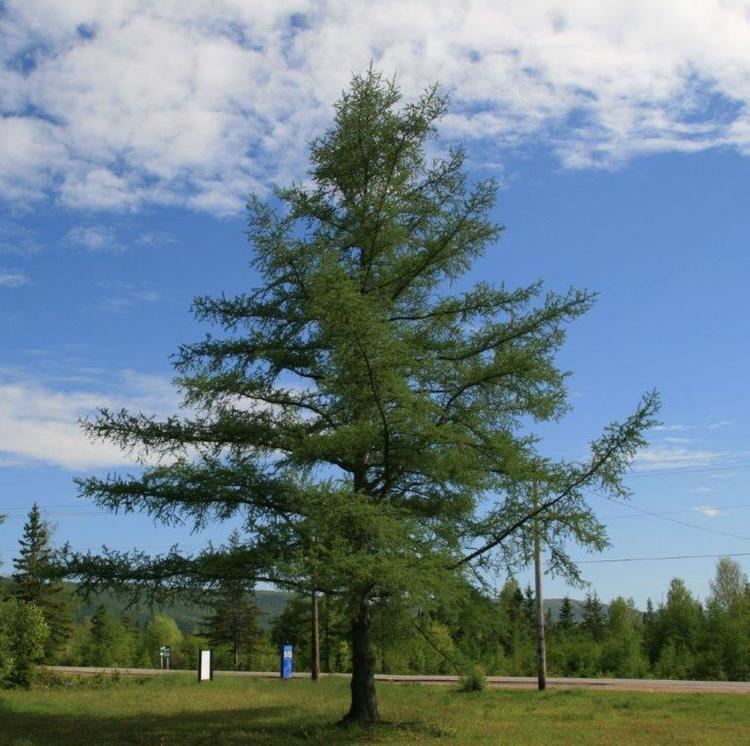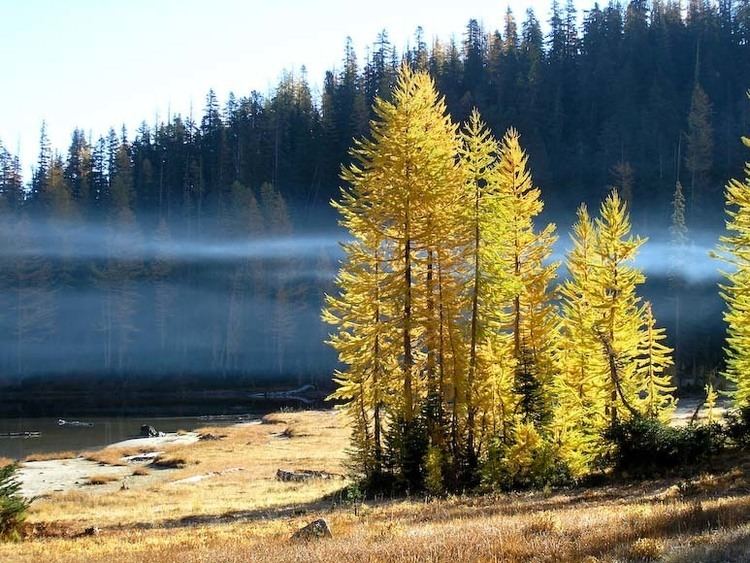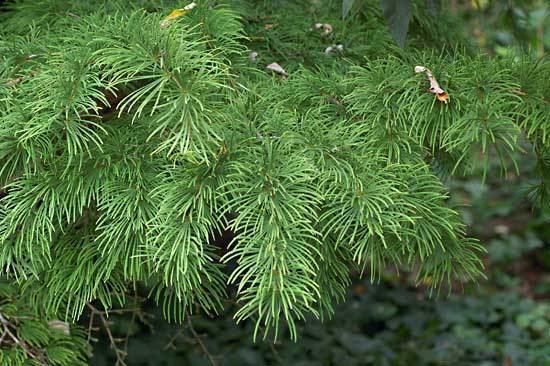Higher classification Laricoideae | Division Pinophyta Scientific name Larix Rank Genus | |
 | ||
Lower classifications | ||
Tree id hybrid larch larix eurolepis european and japanese larch winter uk
Larches are conifers in the genus Larix, in the family Pinaceae. Growing from 20 to 45 m tall (65 to 147 ft), they are native to much of the cooler temperate northern hemisphere, on lowlands in the north and high on mountains further south. Larches are among the dominant plants in the boreal forests of Siberia and Canada. Although they are conifers, larches are deciduous trees that lose their needles in the autumn.
Contents
- Tree id hybrid larch larix eurolepis european and japanese larch winter uk
- Larix larch bonsai bonsai species guides
- Description
- Species and taxonomy
- Diseases
- Uses
- References

Larix larch bonsai bonsai species guides
Description

Larch shoots are dimorphic, with leaves borne singly on long shoots typically 10–50 centimetres long and bearing several buds, and in dense clusters of 20-50 needles on short shoots only 1–2 mm long with only a single bud. The leaves are needle-like, 2–5 centimetres long, slender (under 1 cm wide). Larches are among the few deciduous conifers, which are mostly evergreen. Other deciduous conifers include the golden larch Pseudolarix amabilis, the dawn redwood Metasequoia glyptostroboides, the Chinese swamp cypress Glyptostrobus pensilis and the bald cypresses in the genus Taxodium.
The female cones of larches are erect, small, 1–9 cm long, green or purple, ripening brown 5–8 months after pollination; in about half the species the bract scales are long and visible, and in the others, short and hidden between the seed scales. Those native to northern regions have small cones (1–3 cm) with short bracts, with more southerly species tending to have longer cones (3–9 cm), often with exserted bracts, with the longest cones and bracts produced by the southernmost species, in the Himalayas.
Species and taxonomy
In the past, the cone bract length was often used to divide the larches into two sections (sect. Larix with short bracts, and sect. Multiserialis with long bracts), but genetic evidence does not support this division, pointing instead to a genetic divide between Old World and New World species, with the cone and bract size being merely adaptations to climatic conditions. More recent genetic studies have proposed three groups within the genus, with a primary division into North American and Eurasian species, and a secondary division of the Eurasian into northern short-bracted species and southern long-bracted species; there is some dispute over the position of Larix sibirica, a short-bracted species which is placed in the short-bracted group by some of the studies and the long-bracted group by others.
There are eleven accepted species of larch:
Most if not all of the species can be hybridised in cultivation.
Currently-accepted hybrids are:
A well-known hybrid, the Dunkeld larch Larix × marschlinsii (syn. L. × eurolepis, an illegitimate name), which arose more or less simultaneously in Switzerland and Scotland when L. decidua and L. kaempferi hybridised when planted together, is still treated as unresolved.
Larch is used as a food plant by the larvae of a number of Lepidoptera species—see list of Lepidoptera that feed on larches.
Diseases
Larches are prone to the fungal canker disease Lachnellula willkommii (larch canker); this is particularly a problem on sites prone to late spring frosts, which cause minor injuries to the tree allowing entry to the fungal spores. In Canada, this disease was first detected in 1980 and is particularly harmful to an indigenous species larch, the tamarack, killing both young and mature trees.
Larches are also vulnerable to Phytophthora ramorum. In late 2009 the disease was first found in Japanese larch trees in the English counties of Devon, Cornwall and Somerset, and has since spread to the south-west of Scotland. In August 2010 the disease was found in Japanese larch trees in counties Waterford and Tipperary in Ireland and in 2013 in the Afan Forest Park in south Wales.
Uses
Larch wood is valued for its tough, waterproof and durable qualities. Top quality knot-free timber is in great demand for building yachts and other small boats, for exterior cladding of buildings, and interior panelling. The timber is resistant to rot when in contact with the ground, and is suitable for use as posts and in fencing. The hybrid Dunkeld larch is widely grown as a timber crop in northern Europe, valued for its fast growth and disease resistance. (EN 350-2 lists larch as slightly to moderately durable; this would make it unsuitable for ground contact use without preservative in temperate climates, and would give it a limited life as external cladding without coatings).
Larch has also been used in herbal medicine; see Bach flower remedies and Arabinogalactan for details.
In central Europe larch is viewed as one of the best wood materials for the building of residences. Planted on borders with birch, both tree species were used in pagan cremations.
Larches are often used in bonsai culture, where their knobby bark, small needles, fresh spring foliage, and – especially – autumn colour are appreciated. European larch, Japanese larch, and Tamarack larch are the species most commonly trained as bonsai.
The edible larch boletes grow in symbiotic association with larch trees.
Often, in Eurasian shamanism, the "world tree" is depicted as specifically a larch tree.
